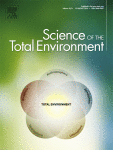Journal of Food Composition and Analysis, 52 (2016) 33–43
http://dx.doi.org/10.1016/j.jfca.2016.07.005
The fatty acid composition, the lipid characteristics and the colour parameters of Tocino, a salted and ripened meat product made from subcutaneous backfat from pig, were studied throughout manufacturing of the product. The effects of the ripening temperature and of the duration of the salting process were also studied. Ripening process caused a significant (P < 0.001) decrease in the total and some individual polyunsaturated fatty acids (C18:2n-6, C18:3n-3, C20:2n-6, C20:3n-6, C20:4n-6, and C20:3n-3), particularly in the polar lipid fraction (total polyunsaturated fatty acids descended from 13.6 to 3.5% of total methyl esters). Increased ripening temperature (from 8 to 12 °C) and longer duration of salting (from 2 to 4 days) caused a significantly greater decrease in the content of polyunsaturated fatty acids. The nutritional and health index values indicated that Tocino is not a healthy product. During the ripening stage, Tocino underwent moderate lipolysis and very intense lipid oxidation (final values of 3.57–5.09 mg KOH/g of fat and 0.84–1.16 mg malondialdehyde/kg). Increasing the ripening temperature significantly increased (P < 0.001) both lipolysis and fat oxidation, while increasing the duration of salting only had a significant positive effect on oxidation processes. Longer ripening times led to a significant increase (P < 0.001) in the b* values (from 8.81 to 18.7–23.7) and significant decreases in the a* (from 7.10 to −3.31 – −4.04) and L* (from 81.5 to 66.4–70.2) values.







